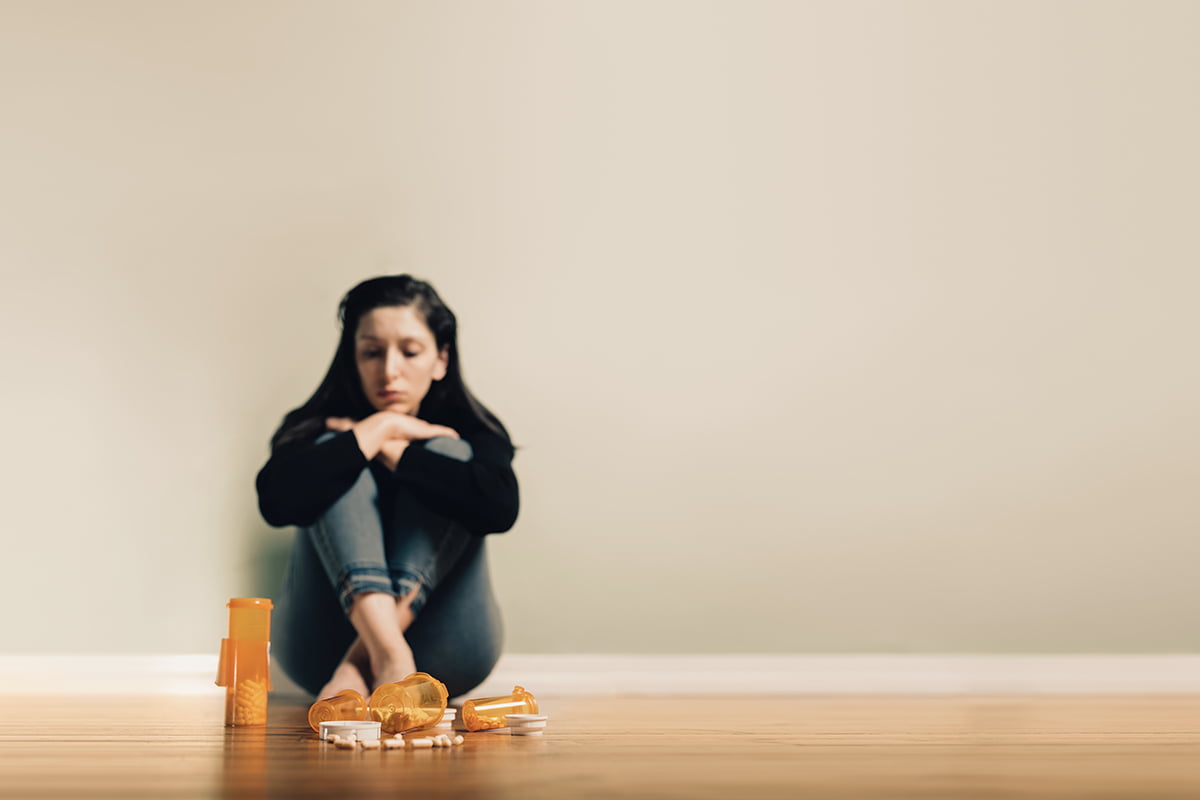Benzodiazepine use is on the rise, with healthcare providers prescribing them at an annual average of nearly 66 million office visits. Subsequently, overdose deaths associated with benzodiazepines have also increased over the past two decades.
Klonopin is the brand name for clonazepam. It is a commonly prescribed benzodiazepine used to treat anxiety disorders, panic attacks, and epileptic seizures. However, it carries the risk of developing a tolerance, leading to potential substance abuse problems.
Klonopin withdrawal may require medical attention and advanced safety measures. Let’s get into what you need to know.
Common Klonopin Side Effects
Benzodiazepines work by slowing down the central nervous system. In this process, they activate the natural chemical neurotransmitter GABA, helping reduce anxiety, insomnia, and seizures.
However, Klonopin use can be risky, especially when taking more than the prescribed amount. This drug is associated with numerous side effects, including:
- Severe drowsiness.
- Fainting.
- Sudden and erratic mood changes.
- Aggression.
- Suicidal thoughts.
- Weakened, slowed breathing.
- Increased heart rate.
- New or increasing seizures.
Klonopin is typically intended for specific, short-term use. That’s because the drug can be so habit-forming. After just a few weeks of taking the prescription, most people start building a physical dependence.
Keep in mind that this dependence can happen even if you’re taking the drug exactly as prescribed. In fact, research shows that about 40% of people taking benzodiazepines for more than six months encounter moderate-to-severe withdrawal symptoms.
If you’re dependent on Klonopin, you will need to take more of it to achieve the desired effect. This pattern can provoke and exacerbate substance abuse problems.
What To Expect From Withdrawal from Clonazepam
After building a dependence to a drug, the individual will experience withdrawal symptoms once reducing or abstaining from it. Klonopin withdrawal symptoms range in severity, and they can be anywhere from mildly distressing to life-threatening.
Common withdrawal symptoms include:
- Increased agitation.
- Flu-like symptoms (nausea, fatigue, shaking).
- Insomnia or other sleep-related problems.
- Increased anxiety.
- Muscle spasms.
- Weight loss.
- Dizziness and coordination problems.
- Muscle pain.
- Blurred vision.
- Depression.
- Problems with concentration.
- Auditory or visual hallucinations.
In severe cases, withdrawal can lead to grand mal seizures. Grand mal seizures tend to be rare, but the risk increases if you’ve been taking benzodiazepines for a long time and in higher doses. The risk may also be more pronounced if taking Klonopin with other drugs, particularly alcohol.
Like with all drugs, the severity of Klonopin withdrawal symptoms depends on several factors, including:
- Length of time using the drug.
- Frequency of the drug (and other drugs) in the system.
- Co-occurring mental health disorders.
- Other medical conditions.
- Age.
- Prior experiences with withdrawal.
Unfortunately, it is impossible to distinguish how you will react to withdrawal. You never know which symptoms may emerge. Even if you’ve had previous experiences detoxing from a benzodiazepine, there is no guarantee this next time will follow the same pattern.
Klonopin Withdrawal Timeline
Klonopin withdrawal has three distinct phases. Because each stage presents its own challenges, it’s imperative to seek professional medical treatment. You may need a supervised detox, especially if you have a history of relapsing on benzodiazepines. Such monitoring will ensure that you stay safe and supported during this vulnerable time.
Early Withdrawal
During the first phase of withdrawal, initial symptoms emerge between 30-40 hours after the last drug use. The symptoms often include heightened anxiety, insomnia, and increased cravings. During this time, people are prone to medical issues (seizures, increased heart rate), and medical supervision is typically recommended.
Acute Withdrawal
After early withdrawal, which lasts for about 3-4 days, the body enters acute withdrawal, which entails the most severe symptoms. This phase includes more psychological side effects, such as mood changes, depression, and anxiety. This phase can last anywhere from 2-8 weeks.
Post-Acute Withdrawal
Post-acute withdrawal includes long-term withdrawal effects, like depression, anxiety, and sleep problems. Not everyone experiences this phase, but it can persist for up to two years after stopping Klonopin.
Final Thoughts
Klonopin withdrawal can feel challenging and frightening. However, if your benzodiazepine use is affecting your quality of life, it might be time to reach out for help. Substance use problems tend to progressively worsen with time, and it’s imperative to obtain the support you need.
If you or someone you know is suffering from addiction, please contact one of our addiction specialists by calling us at (866) 578-7471.








